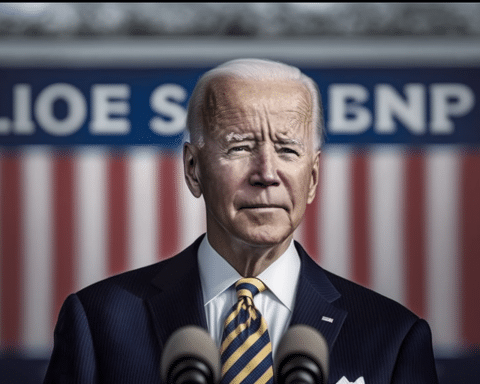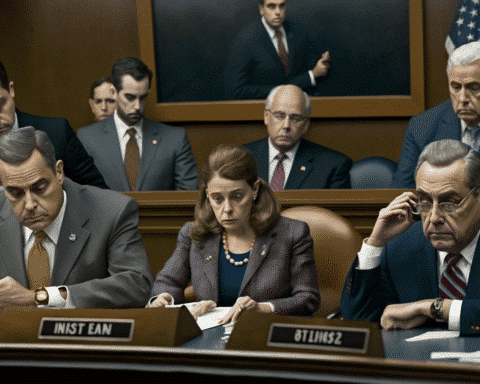President Joe Biden faces a new challenge in convincing Americans to purchase electric cars, heat pumps, solar panels, and energy-efficient appliances in order to meet his goal of reducing greenhouse gas emissions by 50% by 2030.
This crucial public relations task will determine the success of his climate change efforts.
The use of tax credits and rebates in the climate legislation, which was passed in August with support only from Democrats, made it more politically acceptable than regulations that would have required significant changes in polluting industries.
However, this approach also means that the fight against global warming will have to be pursued one household at a time, according to Shannon Baker-Branstetter of the Center for American Progress, a liberal think tank closely associated with the White House.
Polling data shows that while Americans are in favour of efforts to combat climate change, they need to be better informed about the Inflation Reduction Act.
This major legislation includes financial incentives to reduce emissions, and have doubts about their own impact on the climate crisis.
A poll conducted by AP-NORC and released in September, one month after the law was signed, found that 61% of U.S. adults reported knowing little to nothing about the legislation.
Despite the large investment in climate solutions, only a third of respondents said it would help combat climate change, while about half said it would not make a difference.
The White House has indicated that it is not discouraged by these results.
According to Peck, the goal is to make sure consumers are aware of the financial benefits of energy-efficient products when making important decisions about which products to purchase.
“One of the challenges is trying to reach consumers at the point when they make decisions about these purchases,” he said.
The AP-NORC poll found that most U.S. adults are likely to wait to install solar panels or purchase an electric vehicle in the next three years.
Among those, at least half stated that financial incentives would not influence their decision.
This reflects the fact that homeowners tend to be reluctant to replace their furnaces or water heaters once they need replacement, and they have to spend money on them.
“One day the heat won’t turn on, and it’s negative 10 (degrees) outside, and you say, ‘Oh crap, I’ve got to get a furnace,’” said DR Richardson, co-founder of Elephant Energy, a Colorado company that helps homeowners install electric heat pumps and other appliances.
“The biggest challenge, from our perspective and from a climate perspective, is to get people to think ahead of time about how to replace these assets.”
According to Richardson, most homeowners need to understand which equipment qualifies for a rebate or tax credit, and even contractors are only sometimes aware.
While some heat pumps qualify for a full rebate, others do not or are only eligible for partial rebates.
“So it’s just a nightmare if you’re not used to working in building spreadsheets to analyze and understand all this stuff,” he said.
Only some of the incentives are available. While individuals can receive a tax break on the cost of an electric car, solar panels, or heat pump, rebates for low and middle-income Americans looking to make their homes more energy efficient, have yet to be available.
The Energy Department is still in the process of creating the system to distribute that money.
Cecilia Muñoz, director of the White House Domestic Policy Council during the Obama administration, noted that it is crucial for the government to invest in the implementation of policies.
“Too often, we as advocates and policymakers applaud when policy gets enacted and then stop paying attention,” she said.
Instead, it is necessary to design ways to target people directly and help them “understand the steps they can take and the ways the government is going to make it easy.”
Donnel Baird, the founder and CEO of BlocPower, a Brooklyn, New York-based company that partners with utilities, government agencies and building owners to improve energy efficiency, has collaborated with Lowe’s and other retailers to promote environmentally-friendly appliances.
The strategy, according to Baird, is that “the checkout person says, ‘You know, you can get a tax credit if you don’t get that gas lawn mower and get a green one instead.’”
While this approach may produce little results, Baird is confident that the tax credits and other benefits of the climate law will become more widely known.
“It took years for the ACA to get going,” Baird said, referring to the Affordable Care Act, also known as Obamacare. “I think the same thing could happen with this law.”
Dan Pfeiffer, a former top communications advisor to President Barack Obama, sees another lesson in the Affordable Care Act.
“The ACA got more popular the more that Republicans tried to repeal it,” he said, suggesting that Biden should take advantage of any Republican efforts to repeal the Inflation Reduction Act to draw more attention to the law’s benefits.
“I have no doubt the White House has thought of all of this,” Pfeiffer said. “But the problem is that none of it is easy.”
He added: “The bulk of the work starts now.”
The Biden Administration faces a significant challenge in convincing Americans to adopt energy-efficient products to achieve the ambitious goal of reducing greenhouse gas emissions by 50% by 2030.
While politically palatable, the use of tax credits and rebates in climate legislation means that the fight against global warming will have to be pursued one household at a time.
The White House is working on a plan to collaborate with state governments, contractors, retailers, and social media influencers to disseminate information and make the public aware of the financial benefits of energy-efficient products.
The key is to reach consumers when they make important decisions about which products to purchase.
While the task ahead is not easy, it’s important that the government and private sector work together to ensure the success of this effort.




